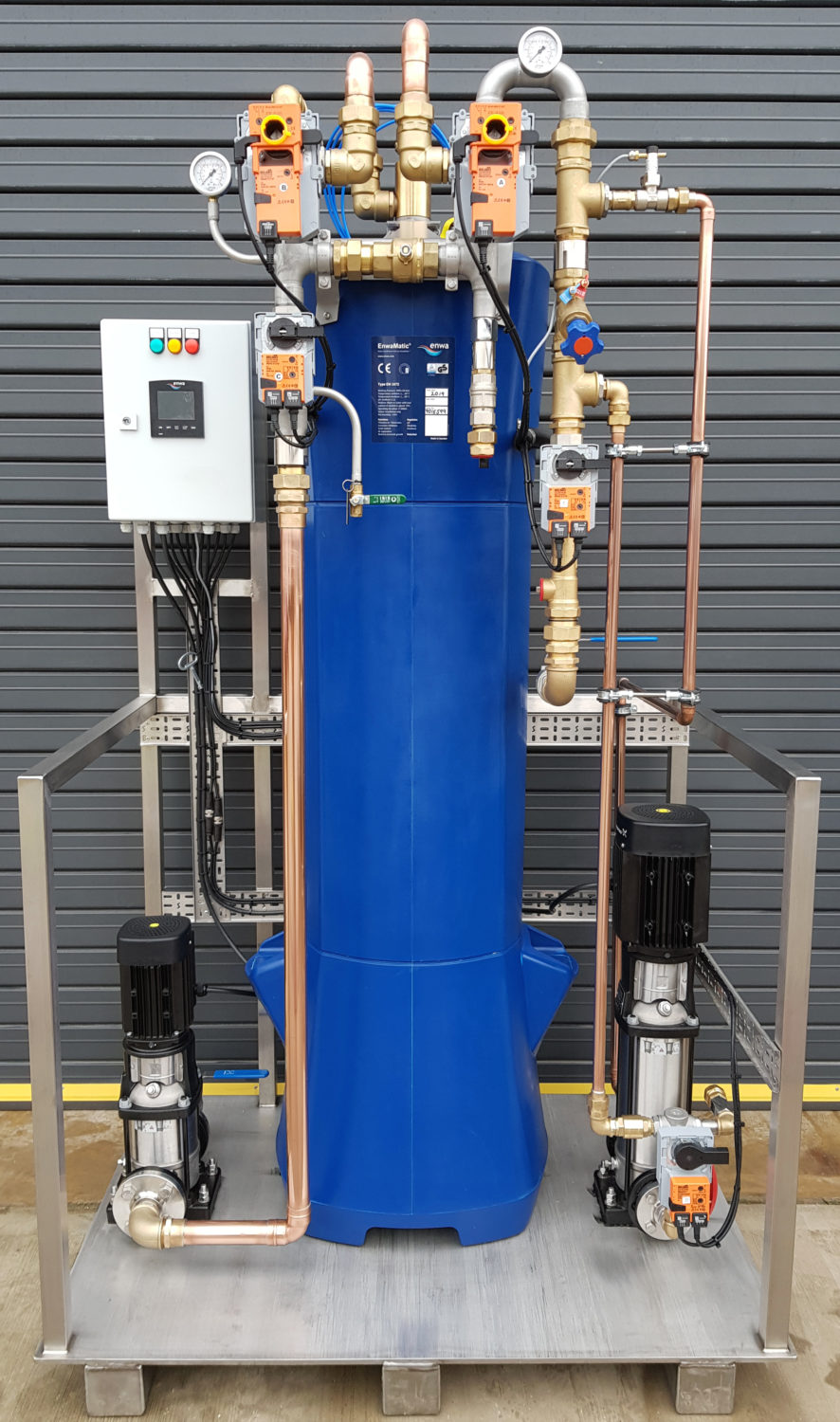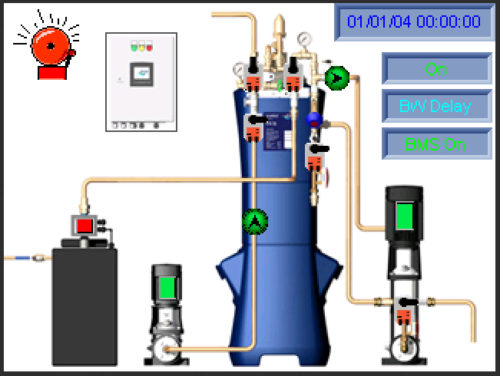The proliferation of ‘smart’ technologies in our buildings gives facilities teams new insights into building performance, allowing them to control energy use and manage indoor conditions for occupant comfort, even from remote automated monitoring centres.
Building management systems (BMS) combined with internet connectivity collect data and respond to performance changes from every type of building services equipment, from the air handling unit to individual valves if they’re web-enabled. And that goes for modern water treatment systems too.
Enwa’s technical experts have worked with numerous building management and facilities teams to design and deliver fully automated water treatment systems that are integrated into the building management system. We believe that this approach ensures effective and reliable operation.
Automation and BMS integration of water treatment can significantly contribute to water quality and safety. Automation minimises the possibility of human error.
Water treatment is not only about health. It also supports system efficiency by reducing corrosion and its impact on heating and cooling systems. Automating water treatment can help ensure that these problems don’t arise, and that minimal human intervention is required to keep water systems up to standard.
Reliance on manual maintenance, testing and dosing can be replaced with a self-regulating water-conditioning process and automated backwashing. And with the water treatment system linked to the BMS, facilities teams can track the status of water treatment and quickly spot any alarms indicating problems.
Enwa has in-house programming capability, so we can tailor PLC (controller) function on our equipment to integrate into existing monitoring systems to suit clients’ particular requirements.
For example, Enwa recently provided modified software for a cooling system incorporating ice storage. An automated backwash system with glycol retention was designed to synchronise with the client’s BMS, ensuring that backwashing would only take place during the warm phase of normal operation.
Similarly, our technical experts have helped universities protect their systems while buildings are empty during vacations. We provide a tailored ‘summer shut-down mode’ for clients in this sector, allowing the BMS to switch the operating mode of our EnwaMatic units during the summer break. The units stop circulating but maintain a regular backwash sequence to prevent stagnation and maintain healthy media bed conditions until regular operation resumes when the term starts.

And when BAE systems were looking to improve monitoring of HVAC equipment at Samlesbury & Warton, ENWA was able to adopt the client’s preferred ‘Current Monitoring’ system. Current transducers, installed within the control panels, monitor the current drawn by circulation and breaktank pumps, alerting the operator if the operating current falls outside pre-set constraints.
Self-regulated and automated water treatment is becoming a more important option to consider as our buildings and the systems in them become more complex. If we look at the growing interest in district heating (driven by government targets for low-carbon heating), numerous issues can arise around water treatment.
District heat networks can be extensive in scale, including large thermal stores across diverse and often buried networks. There can also be many heat interface units (for example, in apartment buildings or across mixed-use sites). The practicality of accessing buildings means dealing with multiple stakeholders and building managers – all adding to the headache of monitoring and maintaining water treatment systems.
Automation and remote monitoring through the building management systems for water monitoring can overcome these issues and provide peace-of-mind for system operators. We have become accustomed to using advanced controls and monitoring for building services such as heating, cooling and lighting. Water treatment can also benefit from applying these technologies and support busy facilities teams in keeping buildings safe and energy efficient.







